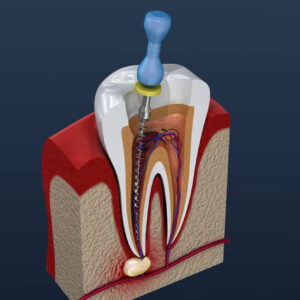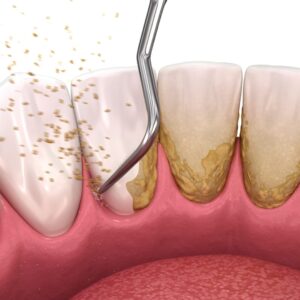Description
Familiarity with treatment
Earlobe reduction, also known as earlobe repair or earlobe reduction surgery, is a cosmetic procedure performed to improve the appearance of drooping, sagging, pendulous, or overly large earlobes. It aims to achieve better facial symmetry and proportions. Here is an overview of the procedure:
Consultation: The first step is to schedule a consultation with a qualified plastic surgeon. During this consultation, you will discuss your concerns, goals, and expectations for the procedure. The surgeon will evaluate your earlobes, assess your eligibility for the surgery, and explain the surgical technique.
Anesthesia: Earlobe reduction surgery is typically performed under local anesthesia, which numbs the area being treated. In some cases, the surgeon may use a combination of local anesthesia and sedation to ensure your comfort during the procedure.
Incisions: The surgeon will make incisions in the earlobe, following the natural creases or in inconspicuous locations to minimize visible scarring. The length and pattern of the incisions may vary depending on the specific technique used and the desired outcome.
Tissue Removal and Reshaping: Excess skin, fat, or tissue is carefully removed from the earlobe to achieve the desired reduction. The remaining tissue is then reshaped and sutured to create a more aesthetically pleasing contour.
Suturing: The surgeon will use fine sutures to close the incisions and ensure proper healing. The sutures may be absorbable or require removal after a certain period, depending on the surgeon’s preference.
Postoperative Care: After the surgery, your surgeon will provide specific instructions for postoperative care. This may include keeping the incisions clean and dry, avoiding strenuous activities, and wearing a protective dressing or bandage for a few days. It is important to follow these instructions to promote proper healing and minimize the risk of complications.
Recovery and Results: The recovery period for earlobe reduction surgery is typically relatively short. You may experience some swelling, bruising, and mild discomfort, which can be managed with pain medication prescribed by your surgeon. Most individuals can resume their normal activities within a week or two, depending on the extent of the procedure.
Who is it suitable for?
Earlobe reduction surgery, also known as earlobe repair or earlobe reduction, is suitable for individuals who are unhappy with the appearance of their earlobes due to drooping, sagging, pendulous, or overly large earlobes. Here are some factors to consider for suitability:
Size or Shape: Earlobe reduction surgery is suitable for individuals who have earlobes that are larger or smaller than average and desire a more proportional appearance.
Protrusion: The procedure is also appropriate for individuals whose earlobes stick out prominently from the sides of their head and wish to have them repositioned closer to the head.
Deformities: Earlobe reduction surgery can address deformities such as “lop ear,” where the tips fold down and forward, or “shell ear,” where the natural folds and creases are missing from the ear’s outer rim.
Macrotia: Macrotia refers to oversized ears that are not in proportion to the head. Individuals with macrotia, whether or not their ears protrude, may opt for earlobe reduction surgery to reduce the size of their ears.
Age: While earlobe reduction surgery can be performed on individuals of various ages, it is most commonly performed on children between the ages of 4 and 14. This is because the ears reach their full growth by the age of 4, making it an appropriate time for surgical intervention. However, adults can also undergo the procedure.
Who is it not suitable for?
Earlobe reduction surgery may not be suitable for everyone. Here are some factors that may make an individual not suitable for the procedure:
Medical Conditions: Individuals with certain medical conditions that increase the risk of complications during surgery or hinder the healing process may not be suitable candidates. Examples include uncontrolled diabetes, autoimmune disorders, bleeding disorders, or active infections.
Smoking: Smoking can impair the healing process and increase the risk of complications following surgery. Surgeons may advise individuals who smoke to quit or at least refrain from smoking for a certain period before and after the procedure.
Unrealistic Expectations: It is essential for individuals considering earlobe reduction surgery to have realistic expectations about the outcome. While the procedure can improve the appearance of the earlobes, it may not achieve perfection or completely change the overall appearance of the ears. It is important to have a thorough discussion with a qualified plastic surgeon about the expected outcomes.
Lack of Earlobe Concern: If an individual does not have any specific concerns about the appearance or proportion of their earlobes, they may not require or benefit from earlobe reduction surgery.
Age and Growth: Earlobe reduction surgery is typically recommended for individuals whose ears have fully matured. While it can be performed on children and adults, the timing may vary based on the individual’s growth and development.
Advantages
Earlobe reduction surgery offers several advantages for individuals who are unhappy with the appearance of their earlobes. Here are some benefits mentioned in the search results:
Improved Appearance: Earlobe reduction surgery can correct the appearance of drooping, sagging, pendulous, or overly large earlobes, resulting in a more aesthetically pleasing and proportionate look. It can enhance facial symmetry and restore confidence.
Enhanced Facial Proportions: By reducing the size or reshaping the earlobes, the procedure can help achieve better facial proportions and balance, particularly when the earlobes are out of proportion with the rest of the face.
Correction of Abnormalities: Earlobe reduction surgery can address earlobe size abnormalities caused by genetics, aging, or trauma, such as heavy earring use. It can correct deformities like “lop ear” or “shell ear” and restore a more natural appearance.
Simple and Straightforward: Earlobe reduction surgery is generally considered a simple outpatient procedure. It is often performed under local anesthesia, and the recovery period is typically relatively short.
Permanent Results: The results of earlobe reduction surgery are generally permanent. However, it is important to note that wearing heavy earrings or other factors may cause the earlobe to stretch over time, potentially affecting the long-term outcome.
Psychological Impact: Earlobe reduction surgery can have a positive psychological impact by addressing concerns and improving self-esteem. It can help individuals feel more confident and comfortable with their appearance.
Complications
Earlobe reduction surgery, like any surgical procedure, carries potential risks and complications. Here are some complications that may occur, as mentioned in the search results:
Infection: Although rare, there is a risk of infection following earlobe reduction surgery. It is important to follow postoperative care instructions and keep the incision site clean to minimize this risk.
Excessive Scarring: Some individuals may develop excessive scarring, which can be raised, thickened, or more noticeable than desired. Proper wound care and following the surgeon’s instructions can help minimize the risk of excessive scarring.
Bruising and Bleeding: Bruising and bleeding are common after any surgical procedure, including earlobe reduction surgery. However, these complications are typically temporary and resolve on their own.
Anaesthetic Reaction: In rare cases, individuals may have an adverse reaction to the anesthesia used during the procedure. It is important to disclose any known allergies or sensitivities to the surgeon before the surgery.
Swelling and Discomfort: Swelling and discomfort are common after earlobe reduction surgery. However, these symptoms are usually temporary and subside as the healing process progresses.
preoperative care
Preoperative care for earlobe reduction surgery is an important aspect of ensuring a successful procedure and optimal outcomes. While the specific preoperative instructions may vary depending on the surgeon and individual case, here are some general considerations mentioned in the search results:
Consultation: The first step is to schedule a consultation with a qualified plastic surgeon. During this consultation, you will discuss your concerns, goals, and expectations for the procedure. The surgeon will evaluate your earlobes, assess your eligibility for the surgery, and explain the surgical technique.
Medical History: You will be asked to provide a detailed medical history to the surgeon. This includes information about any pre-existing medical conditions, allergies, medications, or previous surgeries. It is important to disclose this information to ensure your safety during the procedure.
Physical Examination: The surgeon will conduct a physical examination of your earlobes to assess their condition, size, and shape. This examination helps determine the most appropriate surgical technique and plan for your specific case.
Discussion of Expectations: It is crucial to have a thorough discussion with the surgeon about your expectations for the procedure. This includes discussing the desired size and shape of the earlobes, as well as any concerns or questions you may have. This helps ensure that both you and the surgeon are on the same page regarding the desired outcomes.
Preparation Instructions: The surgeon will provide specific instructions to prepare for the surgery. These may include guidelines for fasting before the procedure, avoiding certain medications or supplements that can increase the risk of bleeding, and quitting smoking if applicable.
Arrangements for Transportation: Since earlobe reduction surgery is typically performed on an outpatient basis, you may need to arrange for transportation to and from the surgical facility. This is important, especially if you will be receiving sedation during the procedure.
Postoperative care
Postoperative care following earlobe reduction surgery is crucial for proper healing and optimal results. While specific instructions may vary depending on the surgeon and individual case, here are some general considerations mentioned in the search results:
Dressing and Wound Care: The surgeon will provide instructions on how to care for the surgical site. This may include keeping the incision area clean and dry, applying prescribed ointments or dressings, and avoiding any activities that may disrupt the healing process.
Pain Management: The surgeon may prescribe pain medication or recommend over-the-counter pain relievers to manage any discomfort or pain during the recovery period. It is important to follow the prescribed dosage and instructions.
Activity Restrictions: It is advisable to avoid strenuous activities, heavy lifting, or activities that may put pressure on the earlobes during the initial healing phase. The surgeon will provide specific guidelines regarding when it is safe to resume normal activities.
Avoiding Pressure on the Earlobes: It is important to avoid any pressure or trauma to the earlobes during the healing process. This includes avoiding sleeping on the side of the operated earlobes and refraining from wearing heavy earrings or other accessories that may strain the earlobes.
Follow-up Appointments: The surgeon will schedule follow-up appointments to monitor the healing progress and remove any stitches if necessary. It is important to attend these appointments and communicate any concerns or questions to the surgeon.
Ear Piercing: If desired, the surgeon will provide guidance on when it is safe to consider ear piercing after the earlobe reduction surgery. This timing may vary depending on individual healing progress.





Reviews
There are no reviews yet.